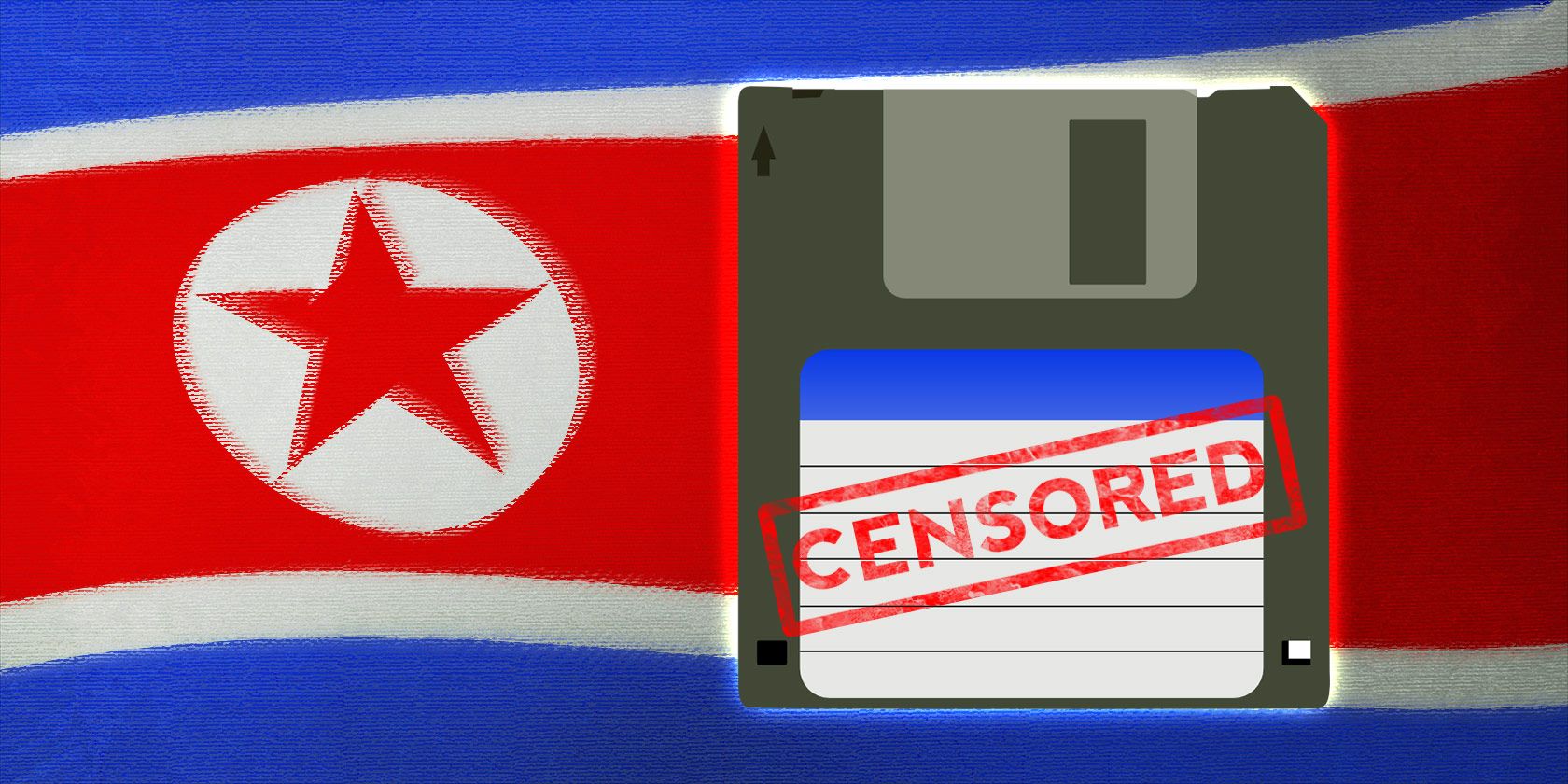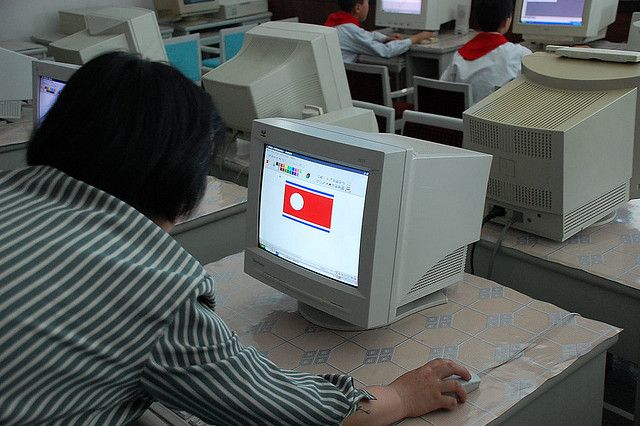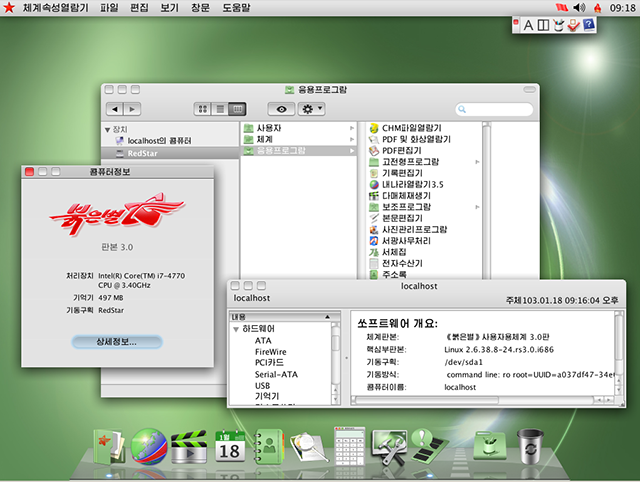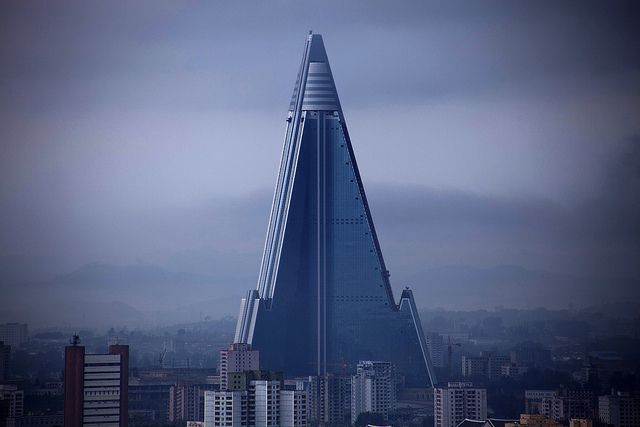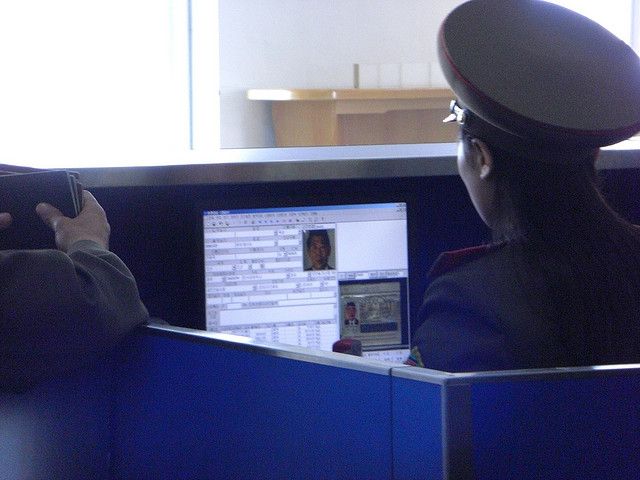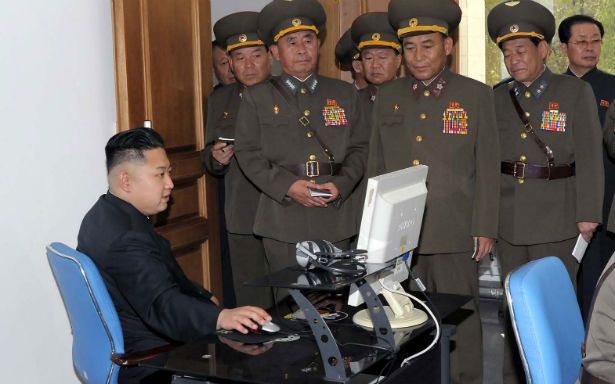North Korea is an enigma.
Since the end of the Korean war in 1953, it has existed as an isolated hermit kingdom, cut off from the rest of the world. Few tourists visit. It only recently normalized diplomatic relations with the Western World, and still isn't on speaking terms with the United States. The buildings are faded and exist in a perpetual state of decay. Propaganda posters line the streets, and patriotic music constantly blares from sirens. It exists as a time capsule to a forgotten era. A Neo-Soviet playground.
But inside, there are people just like you and I. People with jobs, and families. People who live normal lives, in one of the least normal countries on the planet. And much as it is in the West, technology is a big part of that.
In North Korea's isolation, they've developed their own Internet. Their own technology industry. Even their own tablet computers. And they've even used information technology and the Web as a weapon of war. A powerful tool to further their own foreign policy interests.
Here's what digital life in the DPRK looks like.
Kwangmyong
In North Korea, there are two ‘Internets'.
The first is what we understand to be the Internet; a global, chaotic, largely free network of servers and users. Most of whom are free to share, view and create content without first having to ask for permission.
Few North Koreans have access to that Internet. It's mostly a handful of high-ranking and trusted government officials, academics and people working in selected industries. Indeed, the adoption of the standard Internet in North Korea is so low, the entire country only has 1,024 IP addresses in use. For context, South Korea has 112.32 million IPv4 addresses in use. Even the Pacific island of Palau, which has a population of 18,000, uses more IP addresses.
For everyone else, there's Kwangmyong. Literally meaning ‘bright', it acts as the World Wide Web for the rest of the country. But it's not really World Wide, and it's barely the web.
Kwangmyong is a walled garden network of curated content that can be accessed through a dial-up connection, not entirely dissimilar to AOL in the 1990s. The content available is incredibly limited, with some estimates putting the number of websites on Kwangmyong in the thousands. Predictably, this mostly consists of state propaganda, as well as scientific and academic webpages that have been scraped from the open Internet, censored, and translated.
There's also a very rudimentary social network, but very little is known about that. It was first seen by Jean Lee, the Associated Press's Korea bureau chief, and (according to the Washington Post) the only American journalist able to regularly access the notoriously insular hermit kingdom. Lee described it more as a bulletin board than a social network as understood in the outside world, and it is apparently mostly used to send birthday wishes between university students and professors.
Kwangmyong also has an email function, which allows users to send messages to other users on the network. Given the opaque nature of the North Korea, little is known about this, but it's safe to assume it's heavily monitored to ensure it's not used as tool for dissent.
Interestingly, Kwangmyong uses its own DNS system in order to resolve IP addresses to domain names, meaning there are certain top-level domains used within North Korea that aren't used elsewhere.
Although Kwangmyong is officially free to use, in practice, very few people have access to it. This is mostly due to the high cost of computer hardware, especially in relation to North Korean wages. According to NKNews.org, the average North Korean earns between $25 and $30 USD per month. Even the most basic computer isn't affordable.
Even if you are able to afford a computer, there are still bureaucratic hurdles to overcome before you can buy one. Computer ownership is tightly regulated. Anyone looking to purchase one requires a license (much as you would with a car), as well as permission from the government.
Another barrier to the adoption of Kwangmyong is the lackluster state of the DPRK's telecommunications infrastructure. North Korea only has 1 million landlines for a country of 24.9 million people, with most of those being found in the offices of government officials. Without access to a phone line, one cannot dial into the Kwangmyong network. And predictably for North Korea, new landline installations have to be approved by the government.
As a result, a majority of North Koreans do not have home access to Kwangmyong. But this is hardly a concern when you consider that most North Koreans don't have access to basic nutrition.
Consumer Technologies
If you happen to be fortunate enough to have access to Kwangmyong, what would your computer look like?
Well, there's a chance it might be running an operating system called Pulgunbyol, or Red Star OS. which is the North's official Linux distribution.
Development first started in 2002 on the order of the late Kim Jong-Il, who wanted to create a Linux distribution in keeping with ‘Korean Traditions'. It is currently under development by the Korean Computer Center, and in the years since Kim Jong-Il's diktat, it has reached version 3.0.
In many respects, it's like any other community-driven Linux distro. It has a user interface based on the popular KDE windowing environment. There's also the usual built-in utilities, like an e-mail client, and an office suite. Then there's a Firefox spin, called Naenara, which is used to browse Kwangmyong. Predictably, the OS is localized for a North Korean audience, although some have been able to tweak their KDE configuration files to use it in English.
Red Star has been heavily modified to look like Mac OS X. It's no secret that Kim Jong-Il was a devout follower of the Cult of Mac, owning a Macbook Pro, which he even took to the grave with him. It now lives in his heavily guarded mausoleum in the capital, Pyongyang.
Keeping with Apple stylings, it has a translucent dock, where apps can easily be accessed. Amusingly, it also has an ‘/applications' folder in the root of the operating system. Software stored here has the extension ‘.app', keeping in line with OS X. This goes to show the extent to which the developers tried to replicate Kim's favorite operating system.
Should you want to try Red Star OS for yourself, you can grab a copy on Bittorent and via HTTP. You'd be recommended to run it in a virtual machine, however. And obviously, don't use it as your primary OS.
It's worth adding that Red Star isn't universally used by all North Koreans. According to Will Scott, an American graduate student who spent two semesters teaching at the Pyongyang University of Science and Technology (PUST), most computers sold come with pirated copies of the since-discontinued Windows XP operating system.
However, Red Star is heavily used in education environments, as well as in industrial applications. Many factories use it to control heavy machinery.
But the North Korean tech scene is more than just knock-off copies of Windows XP and OS X themed Linux distros. Surprisingly, North Korea also has an answer to the iPad.
It's called ‘Samjiyon', and will set you back around $150. That doesn't sound like much, but it's six times the average North Korean monthly wage – for context, that's like an iPad costing $22,614 in the United States.
In many respects, it's not that different from any other low-end Android tablet produced in bulk by the factories of Shenzhen. It's powered by a 1.2GHZ ARM CPU, 1GB of RAM, and an unspectacular but perfectly acceptable capacitive touchscreen.
Samjiyon runs Android Ice Cream Sandwich, and comes with a number of built-in applications. Some of these are standard Google apps which ship with Android (such as the web browser, which has been tweaked to access Kwangmyong). The Google Play store is obviously removed, given that most North Koreans do not have access to the global Internet. Even if they did, North Korea is under trade sanctions which prevent Google from doing business in the country.
Other apps bundled include a compilation of the sayings of Kim Jong-Il, as well as a pirated copy of Angry Birds Rio.
The Samjiyon lacks Wi-Fi connectivity (presumably it connects to Kwangmyong via some kind of wired connection), but does have an analog TV tuner built-in. This is fixed to the two frequencies used by the DPRK's two state-run television channels.
As fascinating as Red Star OS and Samjiyon are, it's important to remember that the vast majority of North Koreans will never be able to use these products. They're simply out of reach for the vast majority of North Koreans who want for essential needs, such as basic nutrition and healthcare.
Cell Phones
Although most North Koreans don't have access to the Internet, cell phones are startlingly common, with almost 60% of 20-60 year olds living in the capital owning a handset.
The DPRK got its first mobile phone network in 2002, which was used primarily by government and industrial elites, and was located mainly in Pyongyang. However, this was shut down only two years later, after it was suspected the network was used in an assassination attempt against Kim Jong-Il.
Four years later, it was relaunched in a joint venture between the DPRK government and the Egyptian telecommunications giant Orascom. In exchange for being allowed to operate the only mobile network in North Korea (called Koryolink), Orascom agreed to finish construction on the Ryugyong Hotel in Pyongyang; a 105-storey blight on the cityscape which has remained as an uncompleted shell since 1992.
But what does the relaunch of the mobile network mean for the average North Korean? A fundamentally limited and expensive service.
Most North Koreans living in rural areas will never see a cell phone. Even if they did, they probably wouldn't be able to use it. The cell phone infrastructure has been built primarily in Pyongyang and a handful of other larger cities.
Furthermore, there are limits to who can be called. Cell phones cannot dial into or out of the country. Like Kwangmyong, this is only for contacting other North Koreans.
The devices used by North Koreans vary wildly, much as they do in the west. According to StatCounter and South Korea's Digital Times, devices running iOS, Android and Symbian have all been identified as being in use at some point on Koryolink.
Although Orascom have built a 3G network, there's no data access for the ordinary North Korean. However, foreigners can purchase data access and gain access to an unfiltered version of the Internet. It's not cheap, though: according to Will Scott, the American teacher at Pyongyang University of Science and Technology, there's a setup fee of €120, and a monthly data limit of 50 megabytes.
The setup fee for foreigners wanting to use voice services is slightly lower at €80.
Cyber Warfare
North Korea generally lags when it comes to their use of technology. Although, one area where they lead the world is in cyber warfare.
North Korea is a tiny, underdeveloped country with some powerful enemies. As a result, they've invested the bulk of their economic resources into their military, at the expense of the rest of the country. This policy (known as ‘Songun', or ‘military first') has lead to it having one of the largest standing armies in the world. It has also lead to it having advanced cyber-warfare capabilities.
Although the North Korean government hasn't hesitated to use conventional weaponry against its adversaries (such as the sinking of the South Korean warship Cheonan, which resulted in the loss of 46 lives), they've also been known to use hacking as a way to inflict damage upon their enemies. This has the advantage of being cheap, as well as deniable. Perfect for a pariah state.
In the past, North Korea has used digital warfare to attack the military, economic and media interests of their Southern neighbor. In 2013, hackers launched an attack on the South, which saw the websites of the Prime Minister and President attacked, as well as 11 media outlets and 131 miscellaneous servers. North Korea was widely accepted to be behind the attacks.
Later in 2014, it was found that over 20,000 Android smartphones in South Korea had been compromised with a malware-infested mobile game, according to the country's spy agency. The malware left phones vulnerable to eavesdropping and remote video recording. Again, the finger was pointed at North Korea.
Very little is know about the North's cyber warfare capabilities for sure. What is known is mostly a product of revelations and disclosures made by defectors who have fled the regime for the South.
According to these defectors, there are two major groups in North Korea who conduct cyber attacks on behalf of the regime: the No. 91 Office, and Bureau 121.
Details are shadowy about the former, but according to defectors, the latter has between 1800 and 3000 hackers, all of whom have been hand-picked and trained from an early age to compromise computer systems. Employees of Bureau 121 are based not only in North Korea, but also in Thailand, Russia and China. One can presume this is due to the poor standards of connectivity within North Korea, as well as for plausible deniability reasons.
Many have been speculated that Bureau 121 was behind the attack on Sony in 2014. The unprecedented cyber attack resulted in the disrupted release of The Interview (a film which depicts the assassination of North Korean leader Kim Jong-Un in graphic, gory detail), as well as the leaking of a trove of internal emails, and five unreleased movies.
It's worth stressing that many doubt North Korea was behind this attack. Security firm CloudMark even goes so far as to suggest the secretive regime might have been framed.
Conclusion
The Digital landscape in North Korea is one of censorship, and restriction. Of isolation, and of innovation. There is no other country on the face of the planet which has created its own technology infrastructure and industry from scratch, isolated from the rest of the world. It's endlessly fascinating.
But although curious to look at, it's worth noting that this technology isn't designed to empower the everyday North Korean, but to prevent them from viewing what they want, and from communicating with who they wish.
It's anathema to technology as we know it. And perhaps that's what's most interesting about it.
Photo Credits: Ryugyong Hotel (Roman Harak), Pyongyang (Stephan), Passport Control (Stephan)

